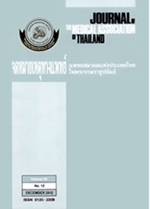แบบประเมิน RI-9 Resilience Inventory RI-9 Thai แบบสอบถามการฟื้นตัว.pdf
English version Resilience Inventory RI-9 Eng.pdf
Chinese version RI-9_Chinese.pdf
9-item Resilience Inventory (RI-9) แบบสอบถาม การฟื้นตัว ๙ ข้อ
RI-9, developed by Tinakon Wongpakaran and Nahathai Wongpakaran, is a 9-item, unidimensional outcome measure designed to capture to what extent an individual recovers well after a setback or problem. Each question has 5 Likert scale choices, and scores ranging from 9 to 45. The items have a response format with five options, where "1" means the statement “does not describe me at all” and "5" means “it describes me very well”. The RI-9 shows to have for reliability and validity.
The RI-9 has been tested in a sample of 140 university students, and shown to be unidimensional. CFA shows the goodness of fit statistics as follows; CFI = .985, TLI = .978, RMSEA = .051 (90%CI .000-.091), Chi-square = 32.79, df= 24, p = 0.109. Rasch analysis shows that all item had fit statistics between 0.77 and 1.32. The person reliability = 0.86, item reliability = 0.93. Cronbach’s alpha was 0.90. In terms of dimensionality, 41.7 % of variance was explained by the measures. The 1st contrast Eigen value was 1.8. No dependency of item was found. No disordered of category and threshold was found.
In this study, the internal consistency coefficient was 0.90. The significant correlation coefficient between the RI-9 and the inner Strength-Based Inventory (SBI) subscales ranged from 0.201- 0.429 (i.e., truthfulness, perseverance, wisdom, generosity, morality (virtue, 5 precept), mindfulness, patience and endurance, equanimity, and determination-resolution.)
The Chinese version of RI-9 was examined in Chinese participants, and demonstrated a Cronbach alpha of 0.925.
Coding and scoring
No reversing values for item is required before summing up. The RI-9 scores range from 9 to 45.
Interpretation
In general, the higher the score, the more the resiliency is indicated. However, we could use the distribution of scores based on the respective sample. For example, a high vs. low level of RI-9 score, or a level of RI-9 among the samples could be grouped in three categories: “low” for scores below the 25th percentile, “average” for scores ranging from the 25th to the 75th percentile and “high” for scores above the 75th percentile.












